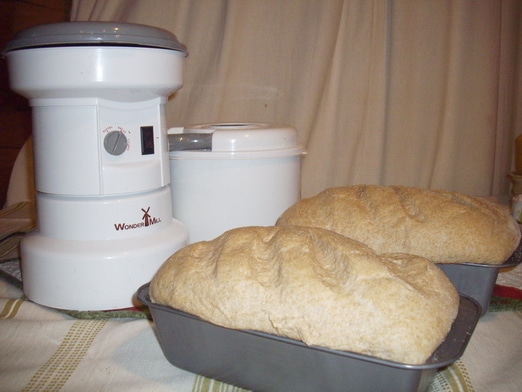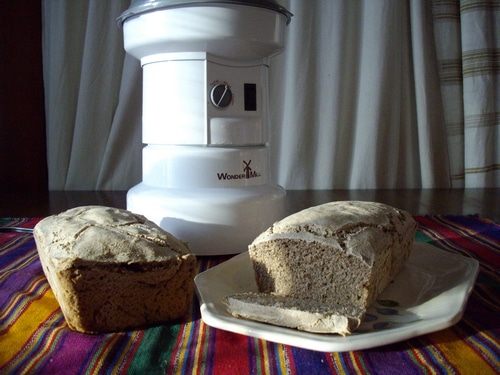Learn about sourdough bread baking through reading with this interesting book. Enjoy the practical aspects of sourdough bread from home, with naturally occurring yeast and bacteria, and lessen reliance on conventional industrial yeast.
Book Review: Bread Revolution by Peter Reinhart (Ten Speed Press: Berkley) 2014
5 out of 5 stars

The next trend in sourdough bread
In the quest for the perfect sourdough bread I’ve bought a lot of bread baking books. My foray into sourdough baking started when I bought my first San Francisco Sourdough kit in the 70s, while still in high school. Has it really been over 40 years? Things have changed immensely in that time. For one thing the internet has brought the finest bread bakers and their experiential wisdom to the home baker through internet courses like Craftsy’s Homemade Sourdough, from starter to finished loaf, taught by Richard Miscovich. (worth the small investment, by the way.) and through the convenience of Amazon books like, Classic Sourdoughs by Ed Wood and the Sourdough Cookbook by Rita Davenport. Hasn’t everything been said about this ancient baking method that needed to be said? When I picked up Bread Revolution, I thought maybe. Now I know that this is only the open door to a new way of baking bread.
This is not your Miner 49er Sourdough cookbook. Bread Revolution is about world-class bread made from sprouted grains, heirloom flours, whole grains and even flours that you’ve never heard of. This book presents fresh techniques from outstanding professional bread bakers that combat the “bread is bad” philosophy so prevalent today. The truth is that white flour is harmful but not all wheat is harmful. Bread made with sprouted grains and long ferments offers a healthful alternative to the gluten-free baking mindset that emphasizes starch over wheat. But with these new flours there needs to be new baking techniques – techniques that draw on history before our mass market food system. Some recipes do include commercial yeast.
Thankfully, Peter Reinhart has taken the speculation out of it for us with Bread Revolution. Reinhart says that the baker’s mission is to extract the grain’s full flavour potential. Each of the innovative techniques, presented, specific to different flours, gives the home baker the opportunity to do that. Every classic bread is updated with innovative flours and new techniques. You’ll find classic sourdough rye, sprouted whole wheat sandwich bread, croissants, challah, pizza, focaccia, bagels, French bread, pretzels, even gluten free biscotti and sourdough English muffins.

Each recipe is presented with volume measurements, weight measurements in grams, and weight measurements in ounces. As well, each recipe contains a % calculation of flour and other ingredients so that it’s easy to double or triple a recipe. Many of the new bread cookbooks require weighing the ingredients, but for a cook like me who just eyeballs a handful of flour, weighing the salt is just too much detail. Those kinds of cookbooks may be fine to read, but they become a hindrance when what you want to do is bake. Who wants to stop and wash their hands when they are kneading a wet levain, just to weigh a bit of salt on a gram scale?
The pictures of crusty sourdough bread are going to make your mouth water. And the step by step pictorial instructions help the reader understand the different techniques. In fact, you can almost smell the fresh bread baking as you look at the perfectly risen loaves.
There are instructions on how to create steam in your home oven, to achieve that oven spring that bakery bread is known for. The mystery of how to get that perfect crusty loaf with that elusive bubbly light crumb is solved. And I appreciated that Mr. Reinhart didn’t insist that we buy a bunch of specialized equipment like bannetons, linen couches, and baking stones, in order to use this book. Suggestions for improvising are offered, so that the home baker can begin with what they have and add to their specialized equipment as they get more familiar with the techniques. “You really only need some mixing bowls, baking pans, a large mixing spoon, and rubber spatulas or something similar.” (p. 11).

One distraction in Bread Revolution was the choice of font used for the recipes. The font was difficult to read and this took away from the ease of reading through the book. In bright light this is not an issue but in dim light, like what you get from a CFL bulb, it takes away from the enjoyment of the book.
More on Sourdough from Joybilee Farm:
Learn how to make your own sourdough starter.
How to bake whole wheat sourdough bread.
Sourdough and blueberry pancakes.



Leave a Reply